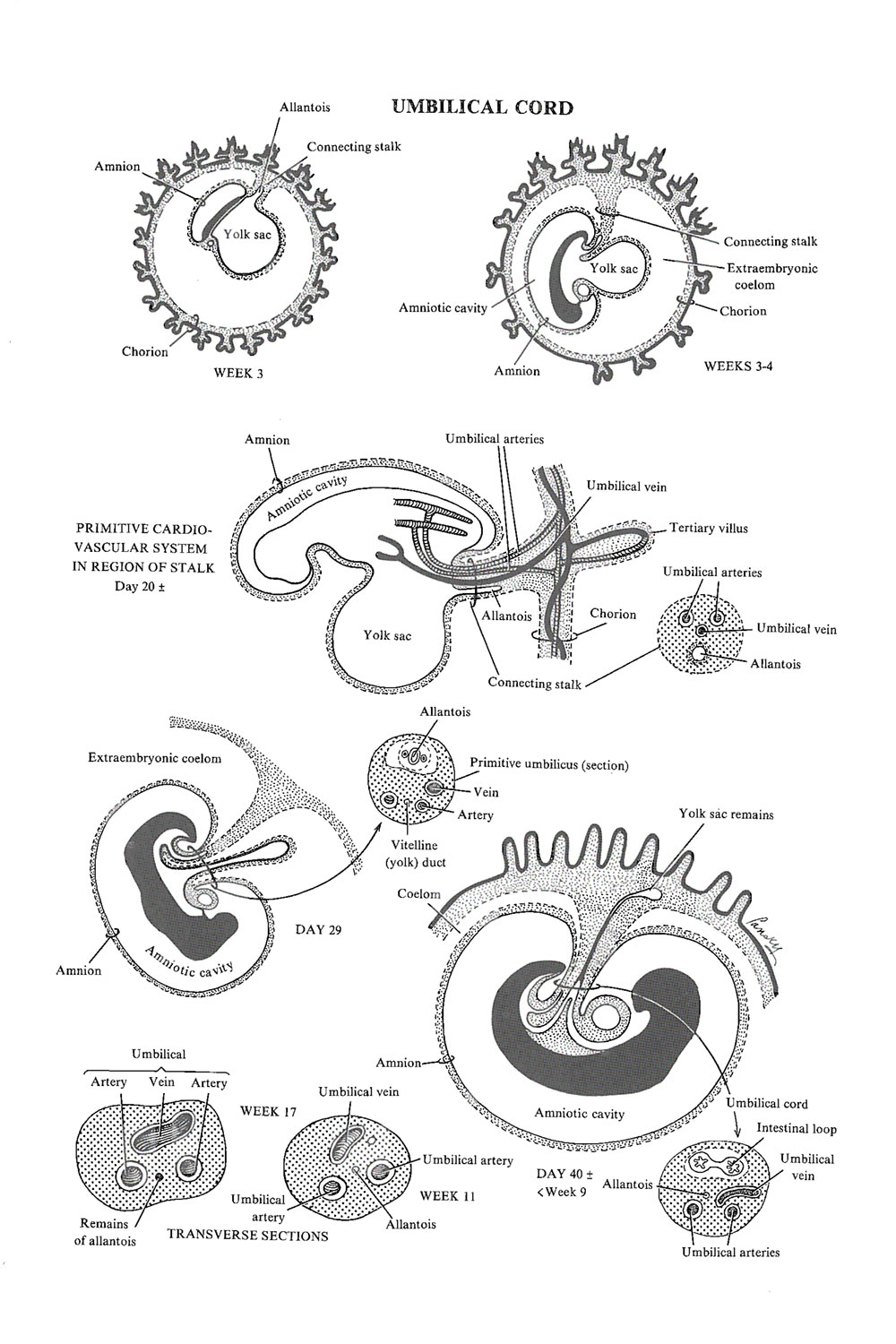35. The Umbilical Cord
Review of MEDICAL EMBRYOLOGY Book by BEN PANSKY, Ph.D, M.D.
- TWO STALKS are seen at the beginning of development
- A ventral one, the yolk sac stalk, containing the vitelline duct and the vitelline vessels
- A caudal one, the connecting stalk, containing the allantois and the umbilical vessels
- The connecting stalk progresses ventrally as a result of the cephalocaudal flexion of the embryo and fuses with the yolk sac stalk to form the umbilical cord
- THE UMBILICAL CORD brings together, in the same mesenchymal core, the components of the connecting stalk (the allantois and umbilical vessels) and the vitelline duct and vessels
- THE UMBILICAL CORD is covered by amnion which is continuous with the outer epithelial layer of the embryo at the attachment of the umbilicus
- THE UMBILICAL CORD is short and thick in the young embryo and is inserted in the lower portion of the ventral region of the embryo
- With the development of the anterior abdominal wall, the region of umbilical implantation contracts, the cord elongates, and also becomes slender
- At term, the cord contains only the umbilical vessels surrounded by Wharton's jelly (a smooth mesenchymous material, a mucous differentiation product of mesoderm) and is about 50-60 cm long and about 2 cm in diameter
- It is tortuous, which may result in the so-called false-knots (not significant)
- An extremely long cord may encircle the neck of the fetus, creating some problems at the time of delivery; or a very short cord may cause difficulties during delivery by pulling the placenta from its attachment
- In about 1% of cases there are so-called true knots in the cord, which in most cases form during labor as a result of the fetus passing through a loop. Since the knots are usually loose, they have no clinical significanc
- If the true knot forms early in pregnancy and tightens during active fetal movements, it may interfere with the fetal circulation and cause death and abortion of the embryo or fetus
- Looping of the cord around the fetus occasionally occurs
- In one-fifth of all deliveries it loops once around the neck and does not create any fetal risk
- In about 1/200 newborns, only one umbilical artery is present and may be associated with cardiovascular abnormalities in 15-20% of cases



